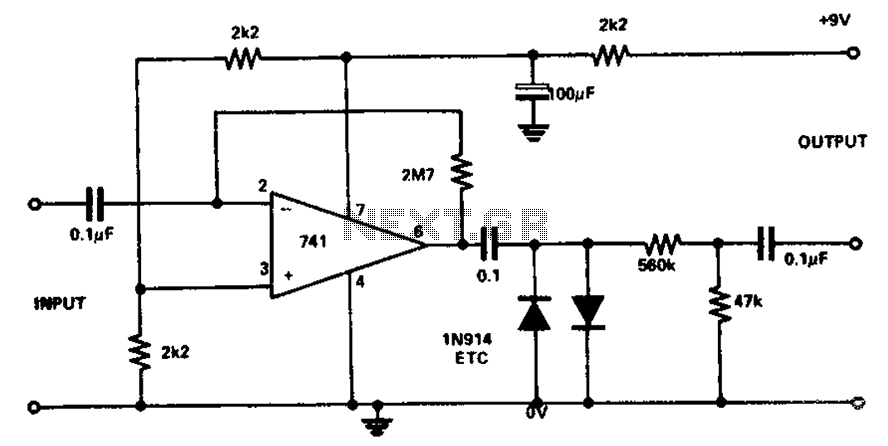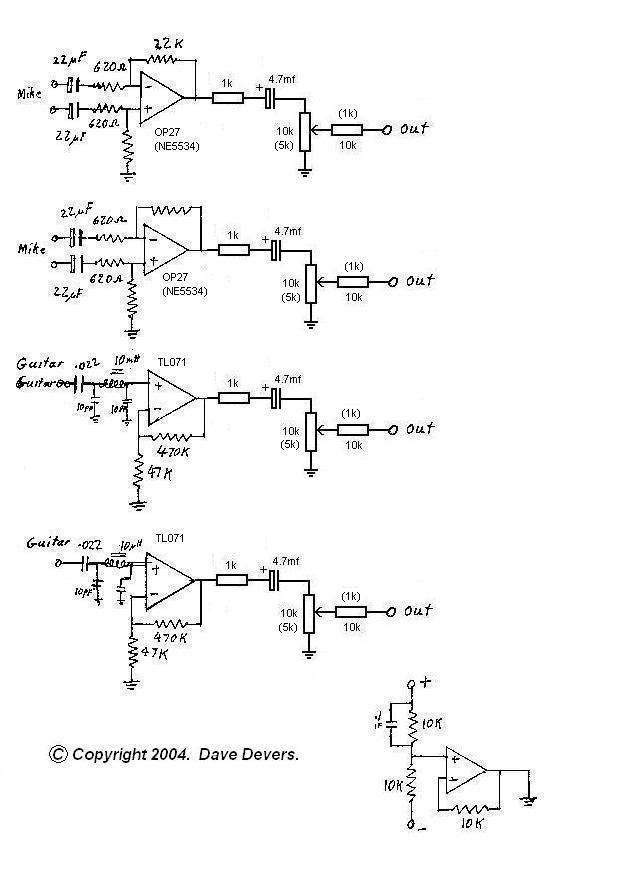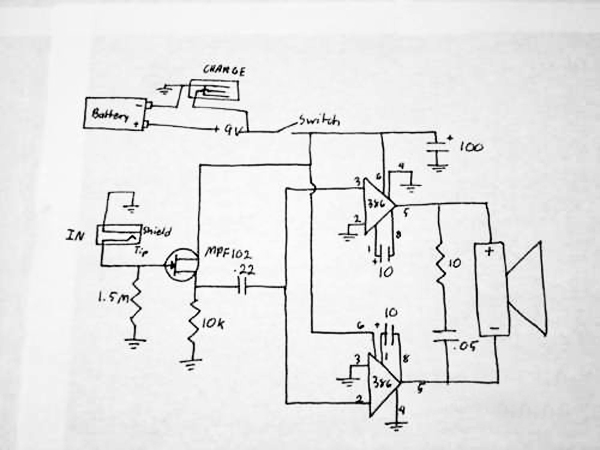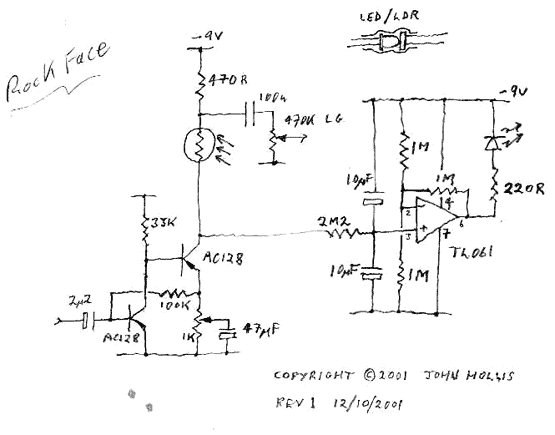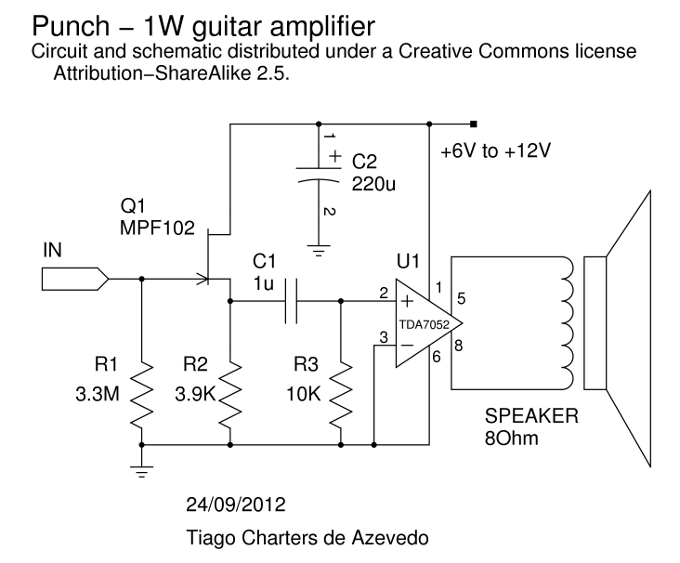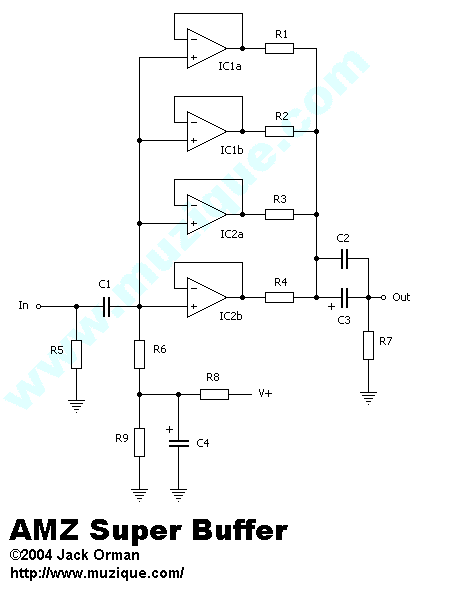
Guitar Reverb II
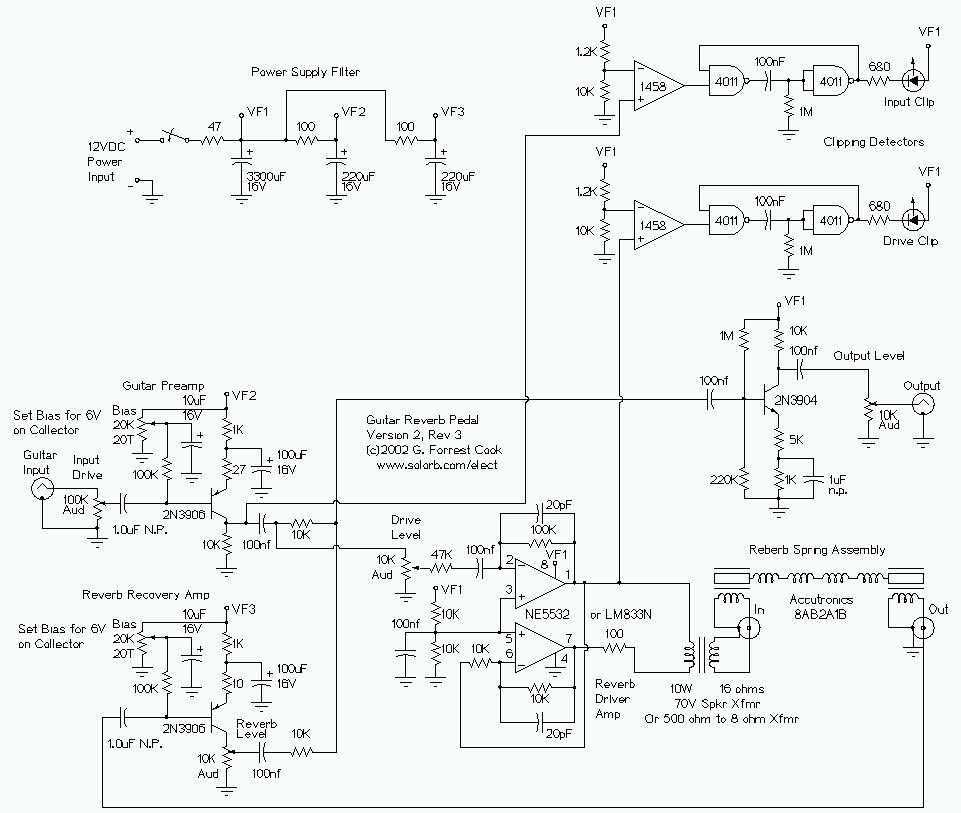
This is my second-generation guitar reverb circuit. The fidelity is much improved over the earlier design, it is suitable for use as a front-end to a guitar amplifier. This circuit features clipping indicators on the preamp and reverb recovery stages, allowing for the optimal gain settings. More: The guitar input stage is a class A amplifier with adjustable bias. A 2N3906 PNP transistor is used for a low noise design on this stage. The output of the preamp stage is sent to three places: the output mixer amp, the reverb driver amp, and the input cli
The second-generation guitar reverb circuit is designed to enhance the fidelity of the audio signal, making it suitable for integration as a front-end component in guitar amplifiers. The circuit architecture employs a Class A amplifier configuration for the guitar input stage, which is known for its linearity and low distortion characteristics. The adjustable bias feature allows for fine-tuning of the operating point of the amplifier, optimizing performance based on the specific requirements of the guitar signal.
A 2N3906 PNP transistor is utilized in the input stage, selected for its low noise performance, which is critical in preserving the integrity of the audio signal. This low-noise design minimizes unwanted artifacts, ensuring that the reverb effect remains clear and defined.
The output of the preamp stage is routed to three distinct destinations: the output mixer amplifier, the reverb driver amplifier, and the input for clipping indicators. The output mixer amplifier combines the processed signal with other audio sources, while the reverb driver amplifier is responsible for generating the reverb effect itself, enhancing the spatial quality of the sound.
Clipping indicators are strategically placed in both the preamp and reverb recovery stages. These indicators serve as visual feedback mechanisms, allowing users to monitor the signal levels and adjust the gain settings accordingly. This feature is particularly useful for achieving optimal sound quality and preventing distortion that may arise from excessive signal levels.
Overall, this circuit design represents a significant improvement over previous iterations, providing musicians with enhanced control and fidelity in their guitar sound processing. The careful selection of components and the thoughtful arrangement of circuit elements work together to create a versatile and high-performance reverb solution for guitar applications.This is my second-generation guitar reverb circuit. The fidelity is much improved over the earlier design, it is suitable for use as a front-end to a guitar amplifier. This circuit features clipping indicators on the preamp and reverb recovery stages, allowing for the optimal gain settings.
The guitar input stage is a class A amplifier with adjustable bias. A 2N3906 PNP tranistor is used for a low noise design on this stage. The output of the preamp stage is sent to three places: the output mixer amp, the reverb driver amp, and the input cli 🔗 External reference
The second-generation guitar reverb circuit is designed to enhance the fidelity of the audio signal, making it suitable for integration as a front-end component in guitar amplifiers. The circuit architecture employs a Class A amplifier configuration for the guitar input stage, which is known for its linearity and low distortion characteristics. The adjustable bias feature allows for fine-tuning of the operating point of the amplifier, optimizing performance based on the specific requirements of the guitar signal.
A 2N3906 PNP transistor is utilized in the input stage, selected for its low noise performance, which is critical in preserving the integrity of the audio signal. This low-noise design minimizes unwanted artifacts, ensuring that the reverb effect remains clear and defined.
The output of the preamp stage is routed to three distinct destinations: the output mixer amplifier, the reverb driver amplifier, and the input for clipping indicators. The output mixer amplifier combines the processed signal with other audio sources, while the reverb driver amplifier is responsible for generating the reverb effect itself, enhancing the spatial quality of the sound.
Clipping indicators are strategically placed in both the preamp and reverb recovery stages. These indicators serve as visual feedback mechanisms, allowing users to monitor the signal levels and adjust the gain settings accordingly. This feature is particularly useful for achieving optimal sound quality and preventing distortion that may arise from excessive signal levels.
Overall, this circuit design represents a significant improvement over previous iterations, providing musicians with enhanced control and fidelity in their guitar sound processing. The careful selection of components and the thoughtful arrangement of circuit elements work together to create a versatile and high-performance reverb solution for guitar applications.This is my second-generation guitar reverb circuit. The fidelity is much improved over the earlier design, it is suitable for use as a front-end to a guitar amplifier. This circuit features clipping indicators on the preamp and reverb recovery stages, allowing for the optimal gain settings.
The guitar input stage is a class A amplifier with adjustable bias. A 2N3906 PNP tranistor is used for a low noise design on this stage. The output of the preamp stage is sent to three places: the output mixer amp, the reverb driver amp, and the input cli 🔗 External reference
